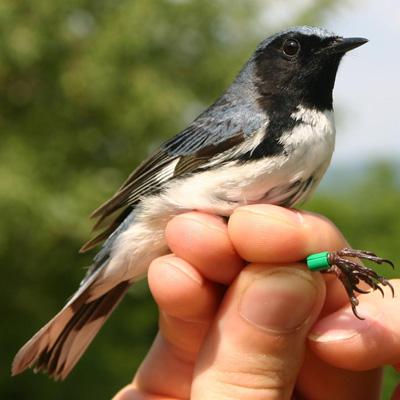Implications of Acid Deposition-Induced Depletion of Soil Calcium for Insect Herbivores and Insectivorous Birds in Northeastern Forests

Substantial loss of calcium has occurred over the past 50 years at many forest sites with base-poor (usually acidic) soils in northeastern North America. This loss has been attributed to acid rain, coupled with declining atmospheric deposition of calcium. Depletion of calcium from forest soils is a concern because of the many roles calcium plays as a regulator of soil pH and as an essential nutrient for plants and other forest organisms. Although considerable scientific evidence has emerged about how changes in the availability of calcium affect trees, implications for herbivores (plant-eating organisms) and their predators remain largely unknown.
From 2005 to 2006, NSRC researchers investigated three tree species, several leaf-feeding caterpillars, and the Black-throated Blue Warbler, an insect-eating bird, on a watershed at the Hubbard Brook Experimental Forest in New Hampshire that received additions of calcium in 1999. Findings on the calcium-treated watershed were compared to those on an untreated reference watershed. Despite the strong influence of calcium addition on leaf nutrient content, researchers did not find consistent effects of calcium treatment on abundance of leaf-chewing insects or on extent of leaf damage resulting from their foraging behavior. They also failed to detect a strong effect of calcium treatment on feeding behavior of the Black-throated Blue Warbler.
Researchers conclude that six or seven years may be too soon to detect changes in the herbivorous insect and insect-feeding bird communities on these watersheds. However, over the long-term, continued loss of calcium from northern forests will most likely trigger changes in populations of leaf-chewing insects and their predators.
